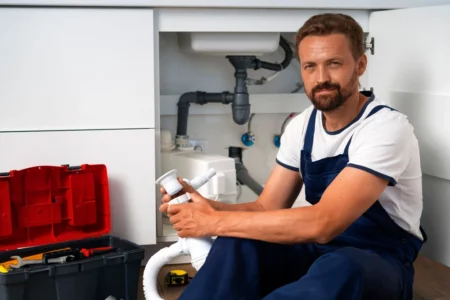 Maintaining a healthy plumbing system is essential for the overall well-being of your home. By adopting proactive plumbing maintenance practices, you can prevent costly issues, ensure water efficiency, and prolong the life of your plumbing fixtures.
Maintaining a healthy plumbing system is essential for the overall well-being of your home. By adopting proactive plumbing maintenance practices, you can prevent costly issues, ensure water efficiency, and prolong the life of your plumbing fixtures.
Proactive plumbing maintenance is a wise investment in the longevity and efficiency of your home. By regularly checking for leaks, inspecting and cleaning gutters, testing water pressure, maintaining drains and pipes, insulating pipes in cold weather, servicing your water heater, scheduling professional inspections, and being mindful of what goes down the drain, you can keep your plumbing in optimal condition.
Remember, a little preventive care goes a long way in ensuring a smoothly functioning plumbing system for years to come. Today, we’ll explore key strategies to keep your plumbing in optimal condition.
1. Regularly Check for Leaks
The first step in proactive plumbing maintenance is to regularly inspect your plumbing for leaks. Check faucets, pipes, and fixtures for any signs of water leakage. Addressing leaks promptly prevents water damage, and mold growth, and conserves water, contributing to a sustainable home.
2. Inspect and Clean Gutters
Clean gutters play a crucial role in preventing water damage to your home’s foundation and plumbing. Debris and leaves can accumulate, leading to clogs and potential water backup. Regularly inspect and clean gutters to ensure proper drainage and avoid plumbing issues.
3. Test Water Pressure
Optimal water pressure is essential for the efficient functioning of your plumbing system. Periodically test the water pressure in your home. Low pressure could indicate a clog or other plumbing issues, while excessively high pressure may damage pipes. Install a pressure regulator if necessary.
4. Maintain Drains and Pipes
Preventative measures for drains and pipes are key to avoiding clogs. Use drain screens to catch debris and hair, minimizing the risk of blockages. Regularly flush drains with hot water and a mixture of baking soda and vinegar to keep them clear and flowing smoothly.
5. Insulate Pipes in Cold Weather
Protect your plumbing system during cold weather by insulating exposed pipes. Frozen pipes can lead to bursts, causing extensive damage. Insulation helps maintain consistent temperatures and prevents freezing, ensuring the longevity of your plumbing.
6. Service Your Water Heater
Extend the life of your water heater by flushing it annually to remove sediment buildup. This simple maintenance task improves efficiency and ensures your water heater operates at its best. Check for signs of corrosion and address any issues promptly.
7. Schedule Professional Inspections
While DIY maintenance is valuable, professional inspections are equally crucial. Schedule regular plumbing inspections with a qualified plumber. Professionals can identify potential issues, offer expert advice, and perform preventive maintenance that goes beyond the scope of typical homeowner tasks.
8. Be Mindful of What Goes Down the Drain
Practice mindfulness about what goes down your drain. Avoid flushing non-biodegradable items, grease, and other materials that can contribute to clogs and plumbing issues. Educate household members about proper disposal practices to maintain a healthy plumbing system.
Picture Credit: Freepik



